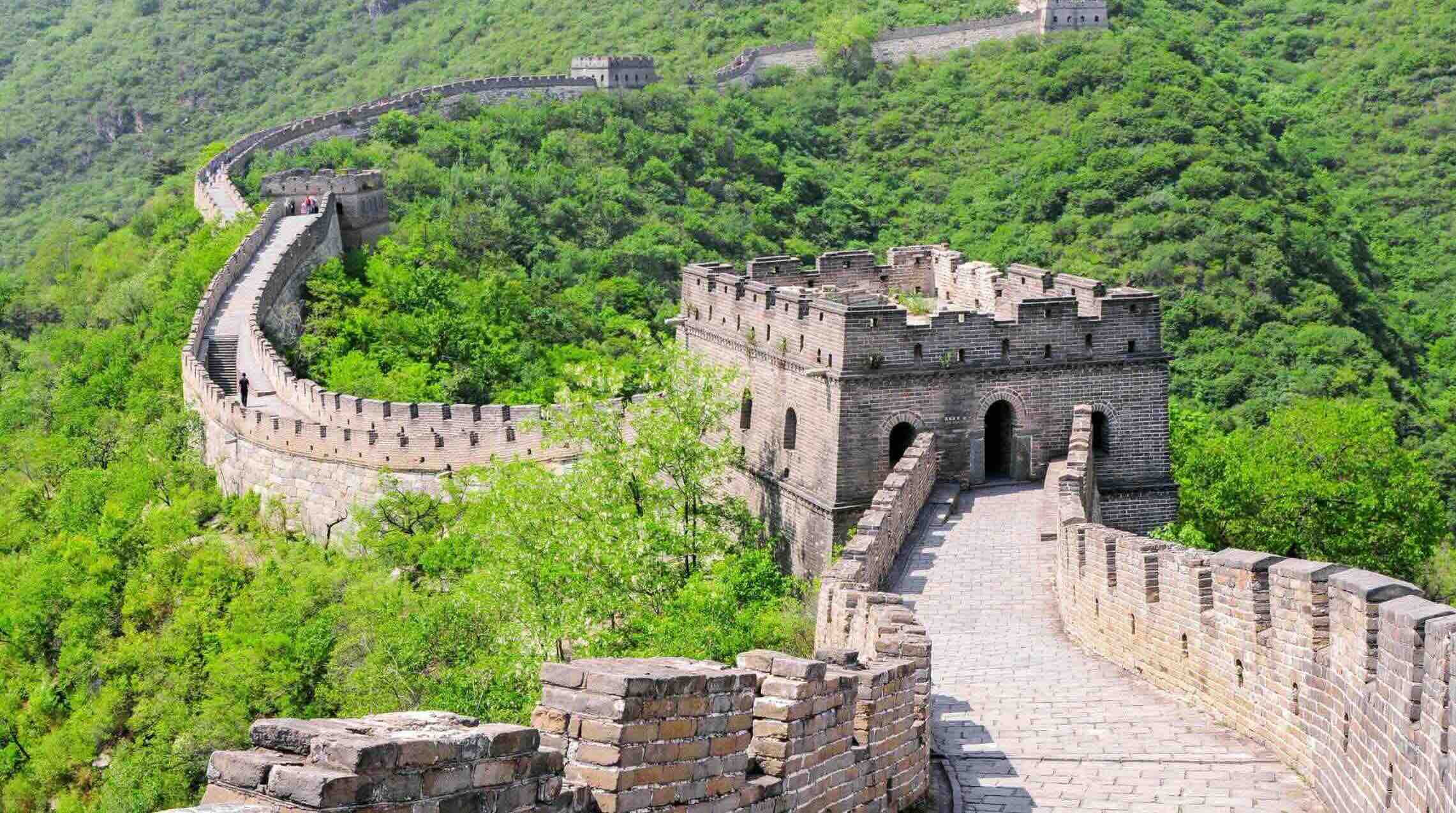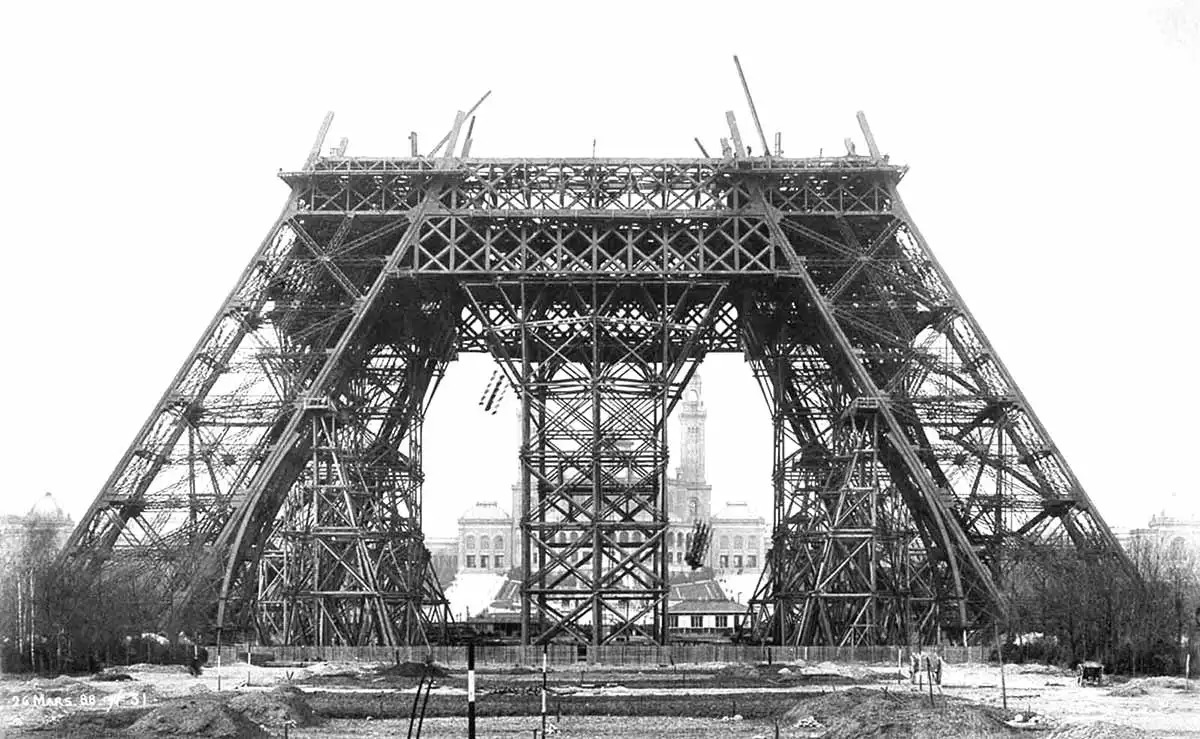Home>diy>Building & Construction>When Did The Construction Of The Great Wall Of China Begin


Building & Construction
When Did The Construction Of The Great Wall Of China Begin
Modified: December 7, 2023
Discover the fascinating history of the Great Wall of China and learn when the construction of this remarkable architectural marvel first began.
(Many of the links in this article redirect to a specific reviewed product. Your purchase of these products through affiliate links helps to generate commission for Storables.com, at no extra cost. Learn more)
Introduction
The Great Wall of China is one of the most iconic and fascinating architectural wonders in the world. Spanning over 13,000 miles, this ancient structure holds a significant place in history and has captivated the imaginations of people for centuries. But when did the construction of the Great Wall of China begin? In this article, we will delve into the early history of fortifications in ancient China and explore the foundations and expansion of the Great Wall throughout the years.
China’s long history of fortifications dates back thousands of years. In the prehistoric era, various tribes and kingdoms constructed walls and fortifications to defend their territories from invaders. These early fortifications were primarily made of earth, wood, and stone, serving as a means to protect settlements and establish boundaries.
The construction of the Great Wall can be traced back to as early as the 7th century B.C., during the Warring States period. The states of Qi, Yan, and Zhao built individual walls to defend their respective territories. However, these early walls were not connected and did not form a continuous structure.
It was during the Qin Dynasty that the foundations for the Great Wall as we know it today were laid. Emperor Qin Shi Huang, the first emperor of China, sought to consolidate the various walls and fortifications into one continuous defense system. This ambitious project aimed to protect the northern borders of China from invading nomadic tribes, most notably the Xiongnu.
Key Takeaways:
- The construction of the Great Wall of China began as early as the 7th century B.C. during the Warring States period, with Emperor Qin Shi Huang laying the foundations for the unified and continuous defensive structure we know today.
- The Ming dynasty played a significant role in the expansion and fortification of the Great Wall, utilizing advanced construction techniques and materials such as bricks to strengthen its defensive capabilities.
Early history of fortifications
Before exploring the construction of the Great Wall of China, it’s important to understand the early history of fortifications in ancient China. The need for defense and protection led to the development of various types of fortifications throughout different periods of Chinese history.
As early as the Neolithic age, settlements in China began constructing rudimentary walls made from soil, wood, and stones. These early walls served as a deterrent against attacks from wild animals and rival tribes. Over time, as civilizations grew and conflicts emerged, the walls evolved into more fortified structures to defend against human adversaries.
During the Spring and Autumn period (770-476 B.C.) and the Warring States period (475-221 B.C.), which were marked by political turmoil and constant warfare, individual states in China began constructing walls around their territories. The construction of these walls was driven by the necessity to protect one’s kingdom and gain a strategic advantage over neighboring states.
The early fortifications were typically constructed using rammed earth, an ancient building technique that involved compressing layers of soil and other materials to create solid walls. These walls were then reinforced with wooden frames and sometimes stone facades for added durability and strength.
One of the earliest known city walls in ancient China was the Pingyao City Wall, constructed during the Western Zhou Dynasty (1046-771 B.C.). It encompassed the city of Pingyao in Shanxi Province and served as a defensive barrier against invaders.
During the Warring States period, the states of Qi, Yan, and Zhao each constructed their own walls to protect their territories. These individual walls marked the early beginnings of the Great Wall, but they were not connected and did not form a unified line of defense.
It was the vision and ambition of Emperor Qin Shi Huang that would bring about the consolidation and expansion of these walls into the monumental structure we now know as the Great Wall of China.
Foundations of the Great Wall
The foundations of the Great Wall of China can be traced back to the dynastic period of Emperor Qin Shi Huang, the first emperor of China. Faced with the threat of invasion from nomadic tribes in the north, Qin Shi Huang sought to fortify the northern borders of China and unite the fragmented walls that existed at the time.
In 221 B.C., after conquering and unifying the rival states, Emperor Qin Shi Huang proclaimed himself the first emperor of the Qin Dynasty. One of his most ambitious projects was the construction of a massive defensive structure, which would later become known as the Great Wall of China.
Under the supervision of General Meng Tian, large-scale construction began to connect and reinforce the existing walls. These early efforts focused on the northern regions of the kingdom, stretching from present-day Gansu Province to Inner Mongolia. Laborers, including soldiers, convicts, and civilian workers, were mobilized to build the wall using sophisticated engineering techniques for the time.
Emperor Qin Shi Huang’s plan was not just to create a defensive structure but also to establish a symbol of imperial power and unity. The construction of the wall was a monumental feat, involving the mobilization of a vast workforce and the utilization of advanced construction techniques.
As the construction progressed, the early walls were primarily built using rammed earth and compacted soil. This mixture was packed tightly between wooden frames and layered to form a sturdy wall. Watchtowers, beacon towers, and forts were strategically positioned along the wall to enhance visibility and provide defensive advantages.
However, the foundations laid by Emperor Qin Shi Huang were just the beginning. The subsequent dynasties in China would continue to expand and strengthen the Great Wall, turning it into the marvelous structure that we marvel at today.
Emperor Qin Shi Huang and the First Emperor’s Wall
Emperor Qin Shi Huang, the first emperor of China, played a pivotal role in the construction and expansion of the Great Wall. Believing in the importance of strong defenses, he sought to protect the northern borders of China from invasion and consolidate the existing fortifications into one cohesive structure.
Emperor Qin Shi Huang came to power in 221 B.C. after conquering the rival states and unifying China. He was determined to establish a centralized and powerful empire, and the construction of the Great Wall was an integral part of his grand vision.
Under the guidance of General Meng Tian, Emperor Qin Shi Huang began a massive building project to connect and reinforce the existing walls in the northern regions. The resulting structure, known as the First Emperor’s Wall, was an engineering marvel that stretched for thousands of miles.
The First Emperor’s Wall was constructed using a variety of materials, including rammed earth, bricks, and stones. The construction techniques employed were advanced for the time, with workers using pulleys, ramps, and sledges to transport materials and construct the wall. The labor force consisted of soldiers, convicts, and civilian workers, who toiled for years to bring Emperor Qin Shi Huang’s vision to life.
Emperor Qin Shi Huang’s wall was not only a defensive fortification but also a symbol of power and unity. It served as a physical barrier, protecting the northern borders from the invasions of nomadic tribes. Additionally, it helped to centralize the empire and establish a sense of national identity among the diverse regions of China.
Despite its impressive scale and significance, the First Emperor’s Wall built by Emperor Qin Shi Huang did not survive the test of time. Over the centuries, much of the original structure has eroded or been destroyed. However, the foundations laid by Qin Shi Huang set the stage for the subsequent dynasties to continue expanding and enhancing the Great Wall.
While the First Emperor’s Wall may not exist in its entirety today, its legacy lives on in the form of the Great Wall of China, a testament to the engineering prowess and visionary leadership of Emperor Qin Shi Huang.
The construction of the Great Wall of China began in the 7th century BC, during the Warring States period.
Ming dynasty and the Great Wall’s expansion
The Ming dynasty (1368-1644) played a significant role in the expansion and fortification of the Great Wall of China. During this period, the Ming emperors recognized the strategic importance of the wall as a line of defense against nomadic tribes from the north and launched extensive construction projects to strengthen and lengthen the structure.
When the Ming dynasty came to power, they inherited a partially damaged and neglected Great Wall from the preceding Yuan dynasty. Emperor Hongwu, the founder of the Ming dynasty, immediately recognized the need to reconstruct and improve the wall to better defend China’s borders.
Under the Yongle Emperor’s reign, construction efforts were focused on expanding and reinforcing the Great Wall. Massive walls were added to protect vital trade routes and strategic areas. In addition to the walls, watchtowers, beacon towers, and forts were built along the entire length of the wall, enhancing its defensive capabilities and facilitating communication.
One of the most notable contributions of the Ming dynasty was the use of bricks in the construction of the Great Wall. Bricks provided greater durability compared to rammed earth and were resistant to erosion and weathering. This new construction technique significantly strengthened the wall and extended its lifespan.
The Ming dynasty also enhanced the defensive features of the Great Wall by adding defensive mechanisms such as battlements, arrow slits, and trapdoors. These features were designed to repel invaders and provided a strategic advantage for the defending forces.
Despite the Ming dynasty’s efforts to strengthen the Great Wall, it ultimately proved to be insufficient in preventing the invasion of the Manchus, who established the Qing dynasty in 1644. This marked the end of major construction and maintenance on the Great Wall.
However, the Ming dynasty’s contribution to the Great Wall cannot be overstated. Their extensive renovations and expansions transformed the wall into the magnificent structure that we recognize today. The Ming-era sections of the wall, with their imposing watchtowers and breathtaking views, continue to be a major draw for tourists from around the world.
The Ming dynasty’s dedication to the fortification and expansion of the Great Wall reflects the importance they placed on national defense and the preservation of Chinese sovereignty. It stands as a testament to the ingenuity and engineering prowess of this remarkable dynasty.
Construction techniques and materials used
The construction of the Great Wall of China required innovative techniques and the use of various materials to create a sturdy and enduring structure. Over the centuries, different dynasties employed different methods and materials, each contributing to the unique characteristics of the wall.
In the early stages of the Great Wall’s construction, rammed earth was the primary material used. This technique involved compacting layers of soil, gravel, and other materials to create a solid wall. The earth was tightly packed between wooden frames and then left to settle and harden. This method was relatively simple and efficient, making it suitable for early construction efforts.
As the construction techniques evolved, bricks became a prominent material used in the development of the wall. The Ming dynasty, in particular, extensively utilized bricks to strengthen and lengthen the wall. These bricks were made by mixing clay with straw and then firing them in kilns. The resulting bricks were strong, durable, and resistant to erosion.
In addition to rammed earth and bricks, other materials such as stones and wood were also used. Stones were commonly used for the foundation and base of the wall to provide stability and reinforce the structure against natural forces. Wood was primarily used for the construction of watchtowers and forts along the wall, providing added defense and a vantage point for surveillance.
To incorporate these materials into the construction process, various techniques were employed. Workers used wooden frames to create the desired shape and size of the wall, ensuring the stability and uniformity of the structure. Laborers used pulleys, ramps, and sledges to transport materials to higher elevations and cover larger distances.
The construction process was a massive undertaking that required a vast workforce. Soldiers, convicts, and civilian workers were mobilized by the ruling dynasties to contribute to the construction efforts. These laborers worked diligently, often enduring harsh conditions and challenging terrain, to build the Great Wall of China.
It is important to note that the construction techniques and materials varied across different sections and dynasties, resulting in variations in the appearance and style of the Great Wall. Some sections feature mainly rammed earth, while others showcase the use of bricks or stones.
The combination of these construction techniques and materials contributed to the durability and longevity of the Great Wall. Despite the passage of centuries and natural elements, significant stretches of the wall have remained intact, a testament to the engineering prowess and meticulous craftsmanship of its builders.
Purpose and significance of the Great Wall
The Great Wall of China holds immense historical and cultural significance, serving multiple purposes throughout its construction and existence. Its primary purpose was defensive, aimed at protecting the northern borders of China from invasions by nomadic tribes. However, the wall’s significance transcends its defensive role.
1. Defensive Barrier: The Great Wall was initially constructed as a line of defense against the frequent incursions by nomadic tribes, most notably the Mongols and the Xiongnu. Stretching for thousands of miles, it served as a physical barrier that impeded the progress of invading forces, giving the defending armies an advantage to thwart attacks and protect the Chinese heartland.
2. Symbol of Unity: The Great Wall represented the unity and collective strength of the Chinese civilization. As different dynasties constructed and expanded the wall, it served as a unifying force, bringing together various regions and ethnic groups under a single purpose of defending the nation. It symbolized the resilience and determination of the Chinese people throughout history.
3. Political Statement: The construction and maintenance of the Great Wall were not only functional but also carried significant political implications. The emperors who ordered the building of the wall sought to solidify their power and establish their legitimacy as rulers. By demonstrating their commitment to protecting the nation and its people, they gained the support and loyalty of their subjects.
4. Cultural Heritage: The Great Wall of China is an integral part of China’s rich cultural heritage and an iconic symbol recognized worldwide. It represents the country’s ancient history, remarkable engineering achievements, and the ingenuity of Chinese civilization. It has inspired countless stories, poems, and artworks, becoming a tangible testament to the artistic and cultural prowess of the Chinese people.
5. Tourist Attraction and Economic Boost: The Great Wall’s immense popularity as a tourist destination has contributed to the local and national economy of China. Each year, millions of domestic and international visitors flock to witness this UNESCO World Heritage Site and marvel at its grandeur. The tourism industry around the Great Wall has created job opportunities and economic growth for the local communities.
The Great Wall of China stands as an enduring testament to the collective effort, ingenuity, and determination of the Chinese people throughout history. Its purpose as a defensive structure, symbol of unity, and cultural icon continues to inspire awe and fascination in people from all corners of the world, making it one of humanity’s greatest architectural achievements.
Conclusion
The Great Wall of China stands tall as a testament to human ingenuity, engineering prowess, and historical significance. From its early foundations in ancient China to its expansion under various dynasties, the Great Wall has served as a formidable defensive barrier, a symbol of unity, and a cultural icon.
The construction of the Great Wall began with the early fortifications built by individual states to protect their territories. However, it was Emperor Qin Shi Huang, the first emperor of China, who laid the foundations for a unified and continuous defensive structure. His vision set the stage for subsequent dynasties, such as the Ming dynasty, to expand and fortify the wall, transforming it into the magnificent structure we see today.
The Great Wall’s construction techniques and materials varied across different sections and dynasties. Rammed earth, bricks, stones, and wood were used to create a durable structure, while advanced engineering techniques were employed to overcome challenges and create a cohesive wall system. The efforts of countless laborers, soldiers, and civilians participating in the construction are a testament to the commitment and determination of the Chinese people.
The significance of the Great Wall extends beyond its defensive role. It embodies the unity of the Chinese civilization, serving as a symbol of national pride and solidarity. It represents China’s rich cultural heritage and has become an iconic landmark recognized around the world. The Great Wall attracts millions of visitors each year, contributing to economic growth and providing a sense of wonder and appreciation for its historic and architectural value.
In conclusion, the Great Wall of China is a captivating testament to the resilience, strength, and innovation of the ancient Chinese civilization. It showcases the ability of human beings to achieve remarkable feats, even in the face of immense challenges. As we admire the grandeur and historical significance of the Great Wall, let us also reflect on the enduring legacy it carries and the lessons it imparts about the power of human creativity and determination.
Frequently Asked Questions about When Did The Construction Of The Great Wall Of China Begin
Was this page helpful?
At Storables.com, we guarantee accurate and reliable information. Our content, validated by Expert Board Contributors, is crafted following stringent Editorial Policies. We're committed to providing you with well-researched, expert-backed insights for all your informational needs.















0 thoughts on “When Did The Construction Of The Great Wall Of China Begin”